The U.S. Department of Defense is working to provide up 100,000 body bags to the Federal Emergency Management Agency as part of the whole-of-government response efforts to the COVID-19 pandemic. U.S. officials have warned that the novel coronavirus could kill as many as 240,000 Americans even with various mitigation strategies in place. If that comes to pass, the U.S. military may find itself called upon to perform a host of other so-called mortuary affairs tasks and related activities.
Bloomberg
was first to report on the impending transfer of the body bags, which the U.S. military technically refers to as human remains pouches, to FEMA on Apr. 1, 2020. The Pentagon has now confirmed this and says it is looking at various sources to meet the request for 100,000 bags, including sending some immediately from the Defense Logistics Agency’s (DLA) own stockpile of 50,000 pouches.
“The Department of Defense and the Defense Logistics Agency have a longstanding arrangement with FEMA to procure key commodities from DLA’s industrial partners during crisis response operations,” U.S. Air Force Lieutenant Colonel Mike Andrews, a Pentagon spokesperson, said in a statement on Apr. 2. “DLA is currently responding to FEMA’s prudent planning efforts for 100,000 pouches to address mortuary contingencies on behalf of state health agencies.”
FEMA is already sending 85 refrigerated trailers to New York City to serve as temporary morgues. That city has become a major epicenter of COVID-19 cases in the United States. As of April 1, the city reported having 45,000 confirmed cases and that more than 1,300 people there had died.
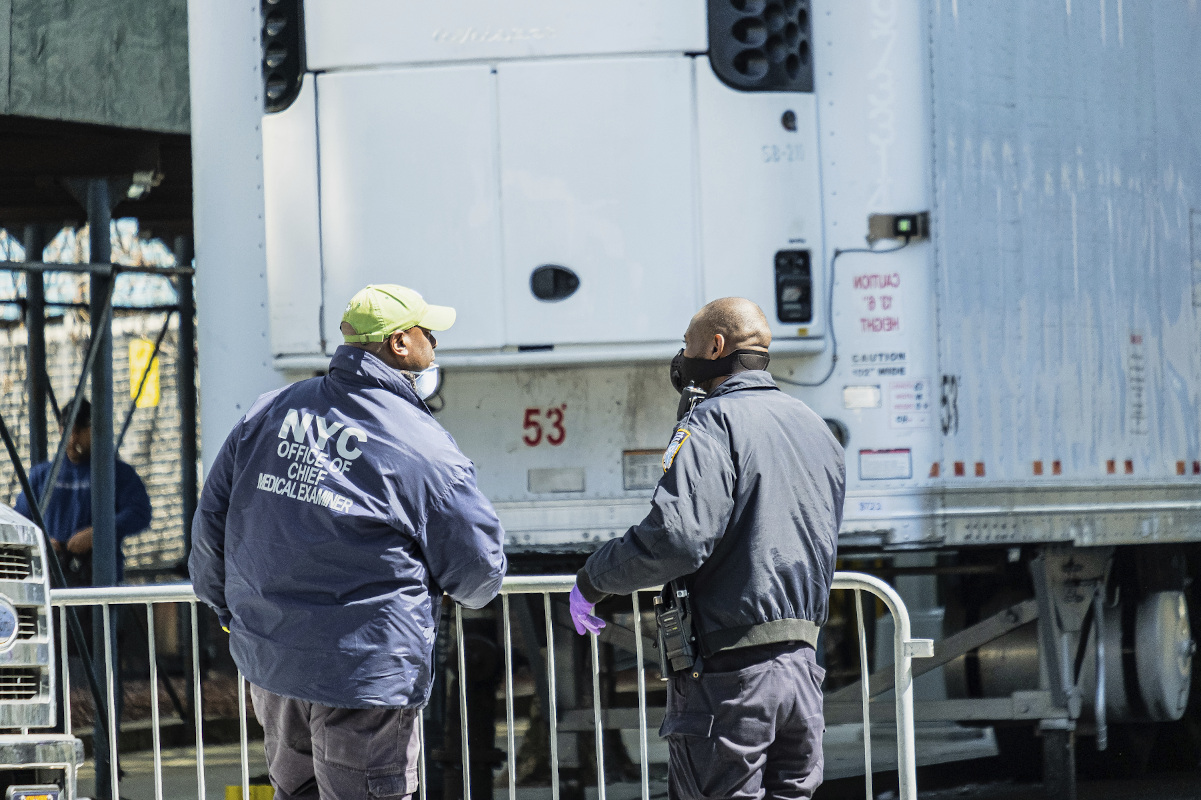
This is a significant number of the more than 200,000 known COVID-19 cases in the United States as a whole, as well as the more than 5,000 deaths across the country, so far. Of course, it is important to remember that there have been significant issues in expanding testing for new cases in the United States and individuals can remain asymptotic for weeks after contracting the virus, meaning the overall number of infections, at least, is undoubtedly higher than is known.
On Mar. 31, 2020, members of the White House’s Coronavirus Task Force warned that the final death toll could be between 100,000 and 240,000, and that the virus might eventually sicken millions more. “We really believe and hope every day that we can do a lot better than that, because that’s not assuming 100 percent of every American does everything they are supposed to be doing – but I think that’s possible,” Dr. Deborah Birx, the White House coronavirus response coordinator, said, referring to mitigating strategies such as social distancing and stay-at-home orders.
With this in mind, FEMA’s request to the Department of Defense for body bags certainly sounds, as Lieutenant Colonel Andrews put it, prudent. In addition, beyond just the broad established relationships between the two organizations, this kind of support a key element of the U.S. military’s pandemic response planning.
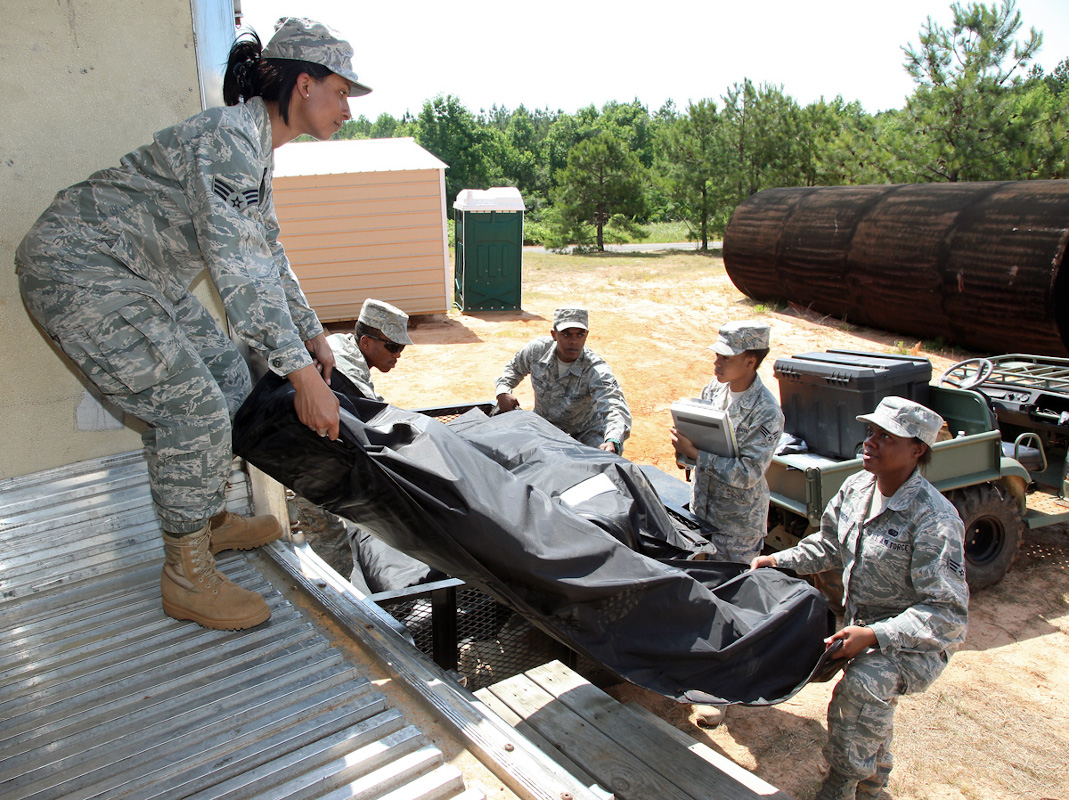
The 2009 edition of U.S. Northern Command’s (NORTHCOM) Concept Plan (CONPLAN) 3551, then titled “Concept Plan to Synchronize DOD Pandemic Influenza Planning,” says that “civilian mortuary affairs operations will require augmentation,” is a key assumption. It also warns that “competing demands for low-density units (e.g., medical, mortuary) will decrease the range of options.”
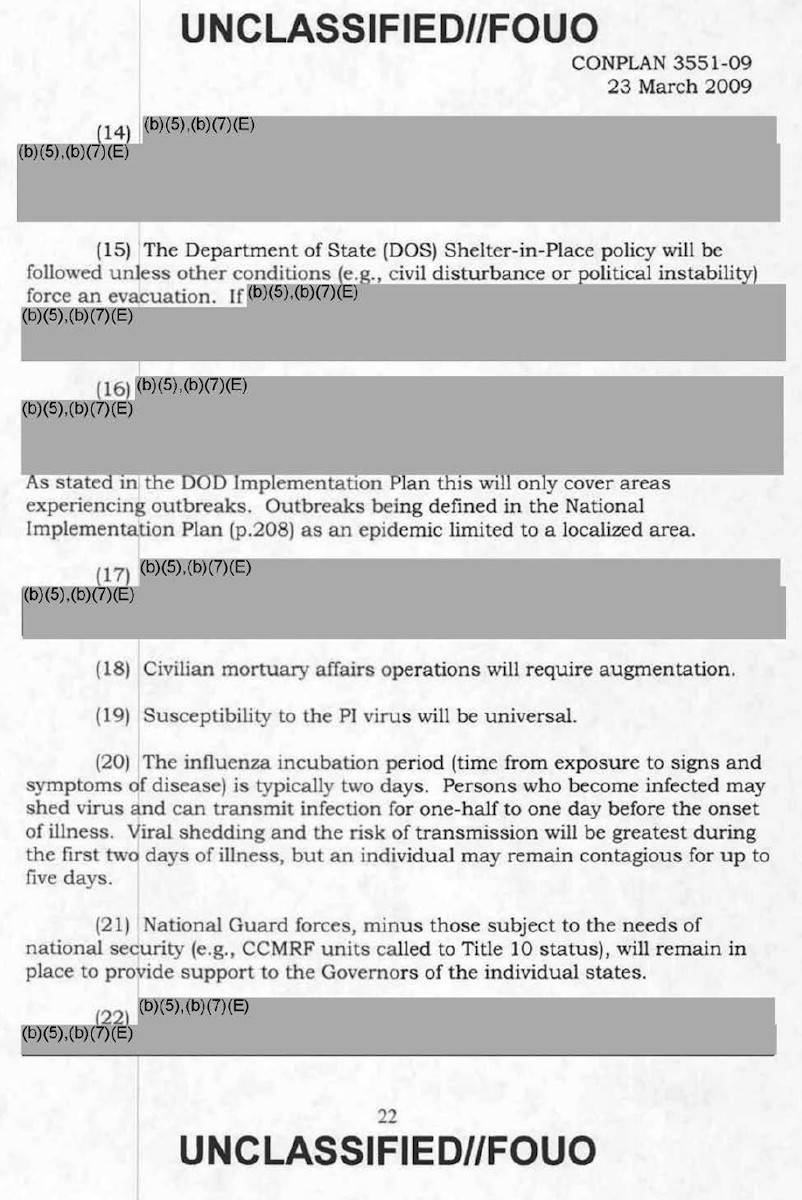
Developed amidst the 2009 swine flu pandemic, CONPLAN 3551 heavily based all of its core assumptions about how a pandemic might impact the United States on the 1918 influenza pandemic. It also specifically identified concerns about another strain of flu, H5N1, more commonly known as Bird Flu.
CONPLAN 3551 has been updated at least once since then, in 2013. On Feb. 12, 2020, Military Times reported that the Pentagon had quietly directed NORTHCOM to begin implementing at least portions of the plan, which is now titled the “Department of Defense Global Campaign Plan for Pandemic Influenza and Infectious Diseases.”
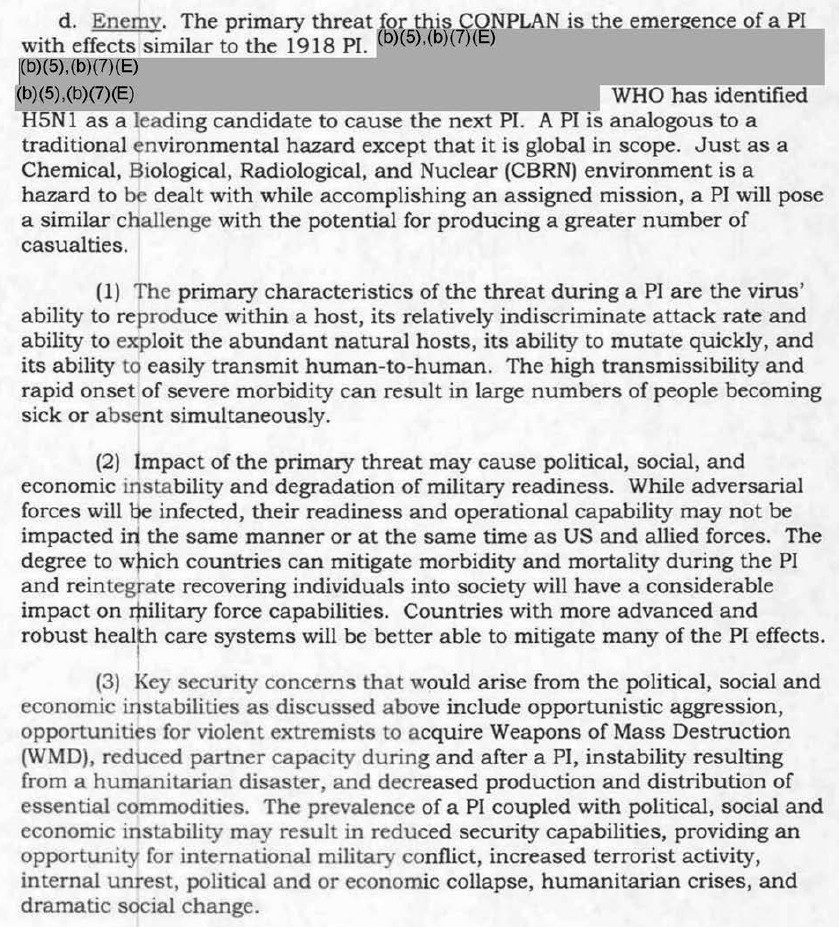
The 2009 version plan outlines a theoretical pandemic influenza scenario that commanders would use to plan how to deploy and distribute their resources. “PI [pandemic influenza] in the United States will result in 30 % (approximately ninety million) of the population becoming ill, 50 % of those ill seeking treatment, three % (approximately three million) of those infected being hospitalized, and a case fatality rate of two % (approximately two million) of those infected over the course of the pandemic,” it says is the working assumption.
So far, the U.S. government is not expecting COVID-19 to result in this level of infections and fatalities. However, there is already evidence of medical personnel, including both EMTs and hospital staff, along with other first responders finding themselves ever closer to being overwhelmed by the growing number of cases. Military medical and support units, especially elements of the National Guard, have already begun deploying in a number of states to assist in the COVID-19 response efforts. The U.S. Navy has also notably deployed its two hospital ships, the USNS Comfort and USNS Mercy, to New York City and Los Angles, California, respectively.
As times goes on, mortuary affairs units may find themselves called upon to “support fatality management assistance in the collection of antemortem information and DNA samples in order to ensure proper identification of remains, and advise personnel and families as needed regarding the process,” according to the 2009 edition of CONPLAN 3591. This plan covers how NORTHCOM and its assigned units, specifically, would respond to a pandemic, whereas CONPLAN 3551 touches on the roles and responsibilities of the entire U.S. military.

“At the national level, the Department of Health and Human Services has [the] responsibility to coordinate civilian fatality management with local, state, and tribal authorities,” CONPLAN 3591 adds. “DOD mortuary affairs personnel may be tasked to assist government agencies.”
The plan also notes the extreme mental stress that individuals working on the front lines of any pandemic are likely to experience, as well as the need for both respectful and safe handling of remains, which may still be contagious. These are issues that have already begun to emerge in the response to the OCVID-19 pandemic.
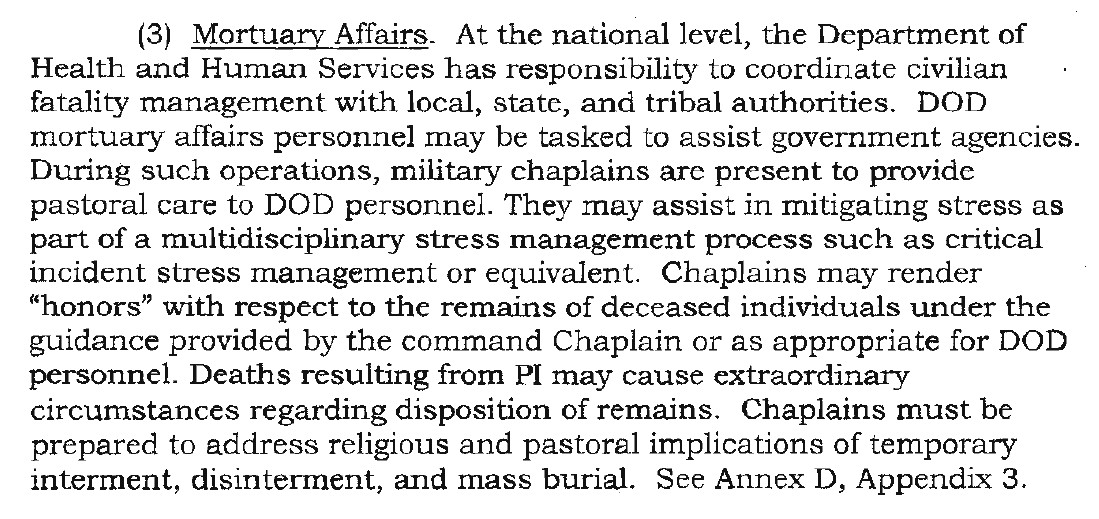
“During such [mortuary] operations, military chaplains are present to provide pastoral care to DOD personnel,” CONPLAN 3591 says. “They may assist in mitigating stress as part of a multidisciplinary stress management process such as critical incident stress management or equivalent.”
“Deaths resulting from PI may cause extraordinary circumstances regarding disposition of remains,” it continues. “Chaplains must be prepared to address religious and pastoral implications of temporary interment, disinterment, and mass burial.”
Hopefully, the measures that the U.S. federal government, along with state and local authorities across the country, are implementing will help significantly lower the total number of COVID-19-related deaths in the end. If the situation does become more serious, the U.S. military is a position to help manage the remains with both honor and dignity.
Contact the author: joe@thedrive.com
